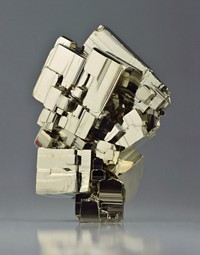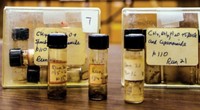Advertisement
Grab your lab coat. Let's get started
Welcome!
Welcome!
Create an account below to get 6 C&EN articles per month, receive newsletters and more - all free.
It seems this is your first time logging in online. Please enter the following information to continue.
As an ACS member you automatically get access to this site. All we need is few more details to create your reading experience.
Not you? Sign in with a different account.
Not you? Sign in with a different account.
ERROR 1
ERROR 1
ERROR 2
ERROR 2
ERROR 2
ERROR 2
ERROR 2
Password and Confirm password must match.
If you have an ACS member number, please enter it here so we can link this account to your membership. (optional)
ERROR 2
ACS values your privacy. By submitting your information, you are gaining access to C&EN and subscribing to our weekly newsletter. We use the information you provide to make your reading experience better, and we will never sell your data to third party members.
Biological Chemistry
A Million Beginnings
Geochemistry: In-depth look at a well-known meteorite unveils new origin-of-life opportunities
by Carmen Drahl
February 16, 2010

In a find that could open new avenues of inquiry in origin of life research, a new chemical snapshot of the Murchison meteorite, one of the world's most studied, suggests it contains millions of organic compounds (Proc. Natl. Acad. Sci. USA, DOI: 10.1073/pnas.0912157107).
The Murchison meteorite plummeted to Earth in 1969, and its minimal exposure to earthly contaminants appeals to scientists seeking clues about how molecules delivered by meteorites could have sparked early life. Previous investigations of the meteorite have been targeted to specific compounds, such as amino acids. Now, a team led by Philippe Schmitt-Kopplin at the Helmholtz Center's Institute of Ecological Chemistry, in Germany, used metabolomics expertise to conduct a nontargeted search. With ultrahigh resolution mass spectrometry and NMR, the team identified signals representing over 14,000 elemental compositions, which they estimate equates to millions of compounds. "I was amazed by the complexity," Schmitt-Kopplin says.
The new work shows there's no shortage of molecules on the meteorite that origin-of-life researchers could investigate, says Jeffrey L. Bada, a cosmogeochemist at the Scripps Institution of Oceanography. "The challenge now is to fish out ones that may have some important early biochemical role."





Join the conversation
Contact the reporter
Submit a Letter to the Editor for publication
Engage with us on Twitter